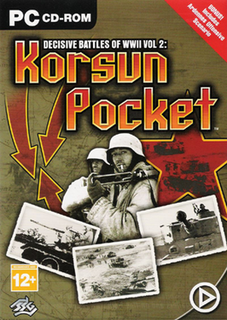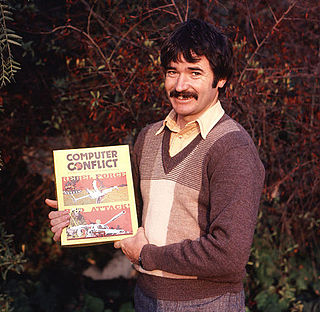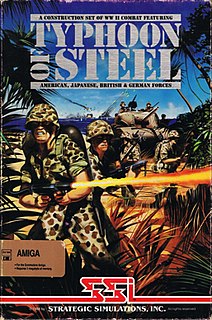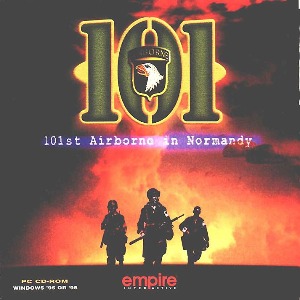
Panzer General is a 1994 computer wargame developed and published by Strategic Simulations Inc. (SSI). It simulates conflict during World War II. The designers of Panzer General were heavily influenced by the Japanese wargame series Daisenryaku.

The Charles S. Roberts Awards is an annual award for excellence in the historical wargaming hobby. It was named in honor of Charles S. Roberts the "Father of Wargaming" who founded Avalon Hill. The award is informally called a "Charlie" and officially called a "Charles S. Roberts Award". The Wargamer magazine called it "very prestigious". The Award is managed by the Charles S. Roberts Award Committee which has no commercial sponsorship, made up of designers, writers and hobbyists. It is a "people's award" with winners chosen through votes submitted by fans.

Decisive Battles of WWII Vol 2: Korsun Pocket is a computer wargame developed by the Strategic Studies Group (SSG). It is the second game in the Decisive Battles of WWII series, following Decisive Battles of WWII: The Ardennes Offensive (1997).
Matrix Games is a publisher of PC games, specifically strategy games and wargames. It is based in Ohio, US, and Surrey, UK.
Turn-based tactics (TBT), or tactical turn-based (TTB), is a computer and video game genre of strategy video games that through stop-action simulates the considerations and circumstances of operational warfare and military tactics in generally small-scale confrontations as opposed to more strategic considerations of turn-based strategy (TBS) games.

Achtung Spitfire! is a 1997 computer wargame developed by Big Time Software and published by Avalon Hill. It is a turn-based air combat game taking place during the early half of World War II, including fixed-wing aircraft, air battles and operations by Luftwaffe, Royal Air Force and French Air Force in 1939–1943.
Real-time tactics (RTT) is a subgenre of tactical wargames played in real-time simulating the considerations and circumstances of operational warfare and military tactics. It is differentiated from real-time strategy gameplay by the lack of classic resource micromanagement and base or unit building, as well as the greater importance of individual units and a focus on complex battlefield tactics.

Axis & Allies is a 1998 computer wargame closely based on the Axis and Allies: Classic board game.

Close Combat III: The Russian Front is a 1999 computer wargame developed by Atomic Games and published by Microsoft. It is the third game in the Close Combat series. It revolves around the Eastern Front during World War II, and takes players from the invasion of the Soviet Union to the final battle for Berlin in 1945.

Close Combat is a 1996 real-time computer wargame developed by Atomic Games and published by Microsoft. Set during World War II, it simulates the conflict between the United States' 29th Infantry Division and Germany's 352nd Infantry Division after the Invasion of Normandy. The player controls an artificially intelligent army whose behavior is dictated by psychological models: each soldier makes decisions based on the circumstances of the battlefield and can disobey the player's orders.

A computer wargame is a wargame played on a digital device. Descended from board wargaming, it simulates military conflict at the tactical, operational or strategic level. Computer wargames are both sold commercially for recreational use and, in some cases, used for military purposes.

The Operational Art of War I: 1939–1955 is a 1998 computer wargame developed and published by TalonSoft. Designed by Norm Koger, it covers military conflicts around the world at the operational level of war, between 1939 and 1955.

Close Combat: Battle of the Bulge, sometimes known as Close Combat IV: Battle of the Bulge, is a 1999 computer wargame developed by Atomic Games and published by Strategic Simulations Inc. (SSI). A simulation of the Battle of the Bulge during World War II, it is the fourth game in the Close Combat series.

Roger Keating is an Australian computer game designer. Along with Ian Trout, Keating co-founded of the video game company Strategic Studies Group, which is known for its strategic war and fantasy games with artificial intelligence. Keating and Trout worked together on the majority of SSG titles.

Typhoon of Steel is a 1988 computer wargame designed by Gary Grigsby and published by Strategic Simulations Inc. (SSI) for the Apple II, Commodore 64, Amiga, and IBM PC. A follow-up to Grigsby's 1987 game Panzer Strike, it simulates military conflict during World War II.

Decisive Battles of WWII: The Ardennes Offensive is a 1997 computer wargame developed by Strategic Studies Group (SSG) and published by Strategic Simulations, Inc.

101: The Airborne Invasion of Normandy is a 1998 computer wargame developed by Interactive Simulations and published by Empire Interactive. Key members of the team had previously worked at Random Games, developer of Soldiers at War and Wages of War.

Gary Grigsby's World at War is a 2005 computer wargame developed by 2 by 3 Games and published by Matrix Games.

War in the Pacific: The Struggle Against Japan 1941–1945 is a 2004 computer wargame developed by 2 by 3 Games and published by Matrix Games. Designed by Gary Grigsby and Keith Brors, it is the successor to Gary Grigsby's Pacific War (1992) and Uncommon Valor: Campaign for the South Pacific (2002).















